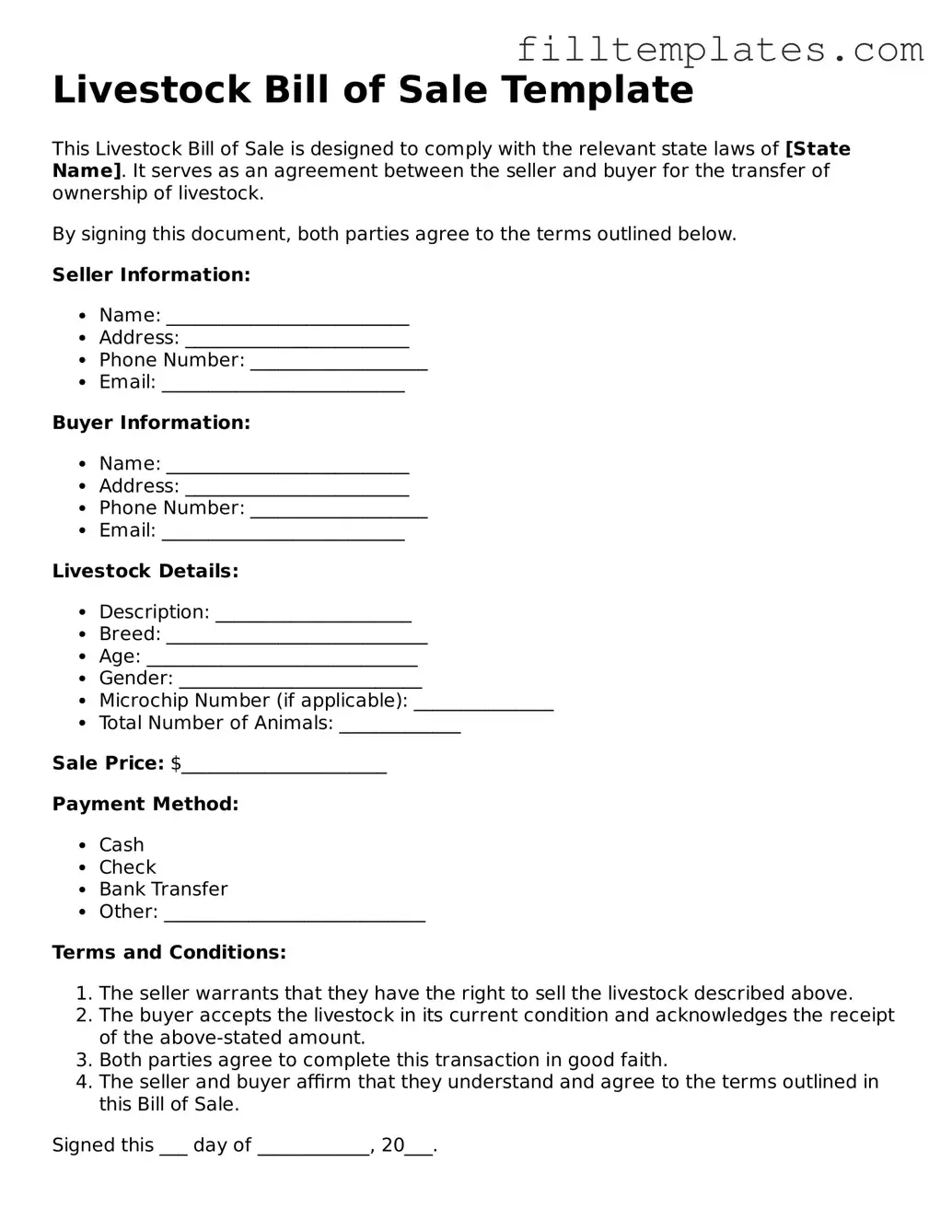Livestock Bill of Sale Template
This Livestock Bill of Sale is designed to comply with the relevant state laws of [State Name]. It serves as an agreement between the seller and buyer for the transfer of ownership of livestock.
By signing this document, both parties agree to the terms outlined below.
Seller Information:
- Name: __________________________
- Address: ________________________
- Phone Number: ___________________
- Email: __________________________
Buyer Information:
- Name: __________________________
- Address: ________________________
- Phone Number: ___________________
- Email: __________________________
Livestock Details:
- Description: _____________________
- Breed: ____________________________
- Age: _____________________________
- Gender: __________________________
- Microchip Number (if applicable): _______________
- Total Number of Animals: _____________
Sale Price: $______________________
Payment Method:
- Cash
- Check
- Bank Transfer
- Other: ____________________________
Terms and Conditions:
- The seller warrants that they have the right to sell the livestock described above.
- The buyer accepts the livestock in its current condition and acknowledges the receipt of the above-stated amount.
- Both parties agree to complete this transaction in good faith.
- The seller and buyer affirm that they understand and agree to the terms outlined in this Bill of Sale.
Signed this ___ day of ____________, 20___.
Seller Signature: ____________________________
Buyer Signature: ____________________________
